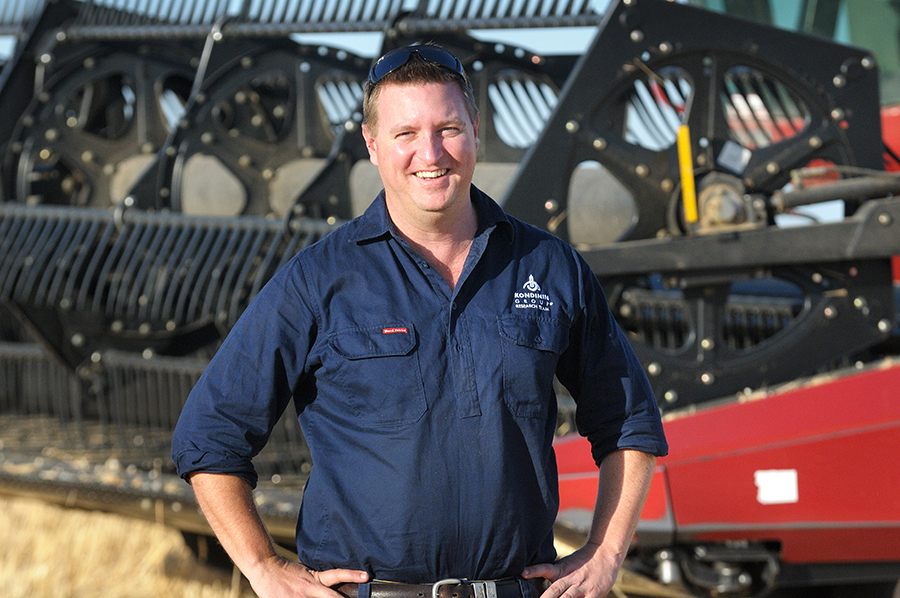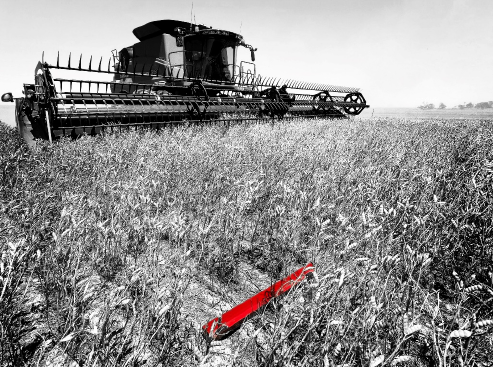Conducted over two successive seasons (2021/22 and 2022/23) this project aims to establish baseline measures of harvester grain losses, support growers with machinery decisions to mitigate losses, share insights gained from the project and identify continued research needs.
A GRDC invested project, GGA will collaborate with grower groups and consultants in all phases of the project. Origins of the project stem from findings by agricultural consultancy Planfarm reporting an astounding $90 million worth of canola is estimated to be lost from the back of harvesters yearly in Western Australia.
Visual assessment of grain on the ground does not provide the accuracy needed for informed decisions about machine setup and setting changes. The importance of using drop trays to determine losses and calibrate loss sensors is critical and this has not been consistently implemented by growers under timeline pressure to get crops successfully harvested.
Beyond the 2022/23 harvest season, growers will have access to locally generated harvest loss data from two of the highest yielding seasons on record for WA.
Activities
Phase 1
- Sample and measure harvest losses from 75 sites across all WA grainbelt port zones covering major species (wheat, barley, lupin and canola) and minor crops (oats, lentil, field pea, faba bean and chickpea) and record harvest losses before and after adjustments from the front and rear of the harvester.
2. Analyse the data collected and establish indicative baseline harvest loss parameters for each crop across port zones.
3. Train and equip sampling teams with drop pans to safely take measurements in a consistent manner across the State, use the BushelPlus app to record data and develop a decision support tool to assist growers and staff to adjust machinery settings.
4. Promote the outcomes of the study through crop updates, local grower group peer-to-peer learning forums and GRDC and Grower Group Alliance (GGA) communications channels.
5. Recommend future research needs.
Phase 2
- Quantify the front and back harvest losses in nine cereal and grain legume crops across 65 cropping paddocks from all five port zones in WA.
2. Measure front losses including data on front type, setup and any additions such as knife guards or air reels, and back losses with consideration to travel speed, rotor clearances, fan speed and sieve settings.
3. Build on the 2021/22 data and demonstrate the benefit of measuring harvest losses to growers to mitigate their grain losses.
4. Findings provided to growers to deduce where these losses occur and be able to calculate acceptable losses irrespective of varying yield.
5. Beyond the 2022/23 harvest season, growers will have access to locally generated harvest loss data from two of the highest yielding seasons on record for WA.
6. Results from the Measuring Harvest Losses in WA project across two sequential seasons will inform a related GRDC project, the Regional Harvester Set-Up Workshops.
7. Research findings from for the 2022/23 harvest will be available to grain growers in the Western Region by June 2023.
Harvester loss study reports
The full report of a 65 site study conducted during harvest 2022 can be read below.
The full report of a 75 site study conducted during harvest 2021 can be read below.
2022 Summary
- There is an opportunity to recoup a considerable portion of harvest losses which, when tallied, exceed a value of $320m
- Losses measured by the Grower Group Alliance exceeded these guideline benchmarks for all winter crop grain types except wheat in 2022.
- Front losses were also surprisingly high, exceeding measured machine losses in all crops except for barley and oats.
- Of note, while offering significantly higher throughput in wheat and barley, stripper front losses were higher than other front styles.
- Pulses can be particularly problematic for front losses with options for knife, reel and air adaptations employed to minimise these pending the economics of doing so.
- Vario/Varicut/Varifeed fronts also demonstrated improvement in throughput in canola crops but with a significant reduction in front losses, making a strong business case for their use.
- Growers that measured losses with drop trays had lower loss figures for high value crops.
- There appears to be merit in threshing system optimisation with aftermarket accessories. Loss reductions and capacity increases have been demonstrated in third-party preliminary but an investment in further work in this space would look to validate this work more widely.
2021 Summary
- Applying GIWA reported receivals and the price of grain at harvest, growers have an opportunity to rectify 2021 harvest losses of an estimated $300m+ of grain left in the paddock.
- 200 samples collected by Grower Groups state-wide using BushelPlus drop trays
- Front and machine losses measured for all WA grown crops
- Loss benchmarks are less than 1% for cereals and 3% for canola but should be balanced with harvest capacity and machine running costs.
- Average losses in wheat and barley as tested by the Grower Group Alliance in 2021 were around 2% and 4.6% respectively
- Averaged measured losses in canola were measured at 3.2% but were measured as high as 10%
- Pulse crop losses were very high, measuring an average of more than 10% in lupins. Most of this was attributable to front losses.
- Front losses in canola averaged of 1.7% for growers using draper fronts while adjustable table fronts averaged losses of 1%.
- Growers using drop trays averaged 1.3% machine losses across all crops, those not using trays averaged 2.9% machine losses.
Project Update
Update 3 – Measure harvest losses to save time and make money | August 2023
Update 2 – Harvest losses in the 2022/23 season exceed acceptable thresholds | June 2023
Update 1 – Phase two of GRDC’s Harvest Losses announced| December 2022



News
Follow the project partners on Twitter to keep up with harvester losses extenstion and the project trial results including Primary Sales, agricultural engineer and project consultant Ben White, Facey Group, Stirlings to Coast Farmers and LIEBE group.
Resources
Project Team








For a second successive year, the Grains Research and Development Corporation (GRDC) has invested in an assessment of harvest losses in Western Australia to understand the optimum balance between acceptable grain loss and operational efficiency to minimise cost and maximise profits.
GRDC Grower Relations Manager – West, Jo Wheeler, says the continued investment would help determine where grain losses occur, calculate the amount and cost of lost grain to growers, and identify solutions to improve harvest efficiency.“Findings from last year’s project confirmed that measuring the grain thrown out of their harvesters is one of the single biggest things growers can do to put more profit in their pockets at harvest,” Ms Wheeler says.
The 2021/22 project report suggested harvest losses in WA were up to $300M annually but varied significantly with crop type and where the losses occurred in the harvest setup.
GGA Project Manager Daniel Kidd says growers would be able to use these findings to deduce where these losses occur and be able to calculate acceptable losses irrespective of varying yield.
“The data generated from this project will allow growers to benchmark their grain losses and understand where these losses are likely to occur for their particular harvester setup and by crop type,” Mr Kidd says.
Contact
Enquiries to Daniel Kidd at GGA
Collaborators







